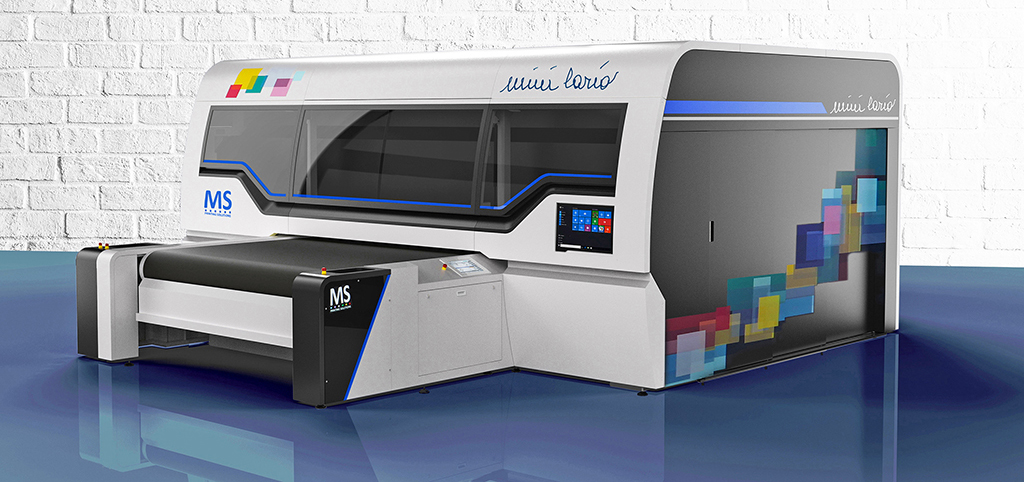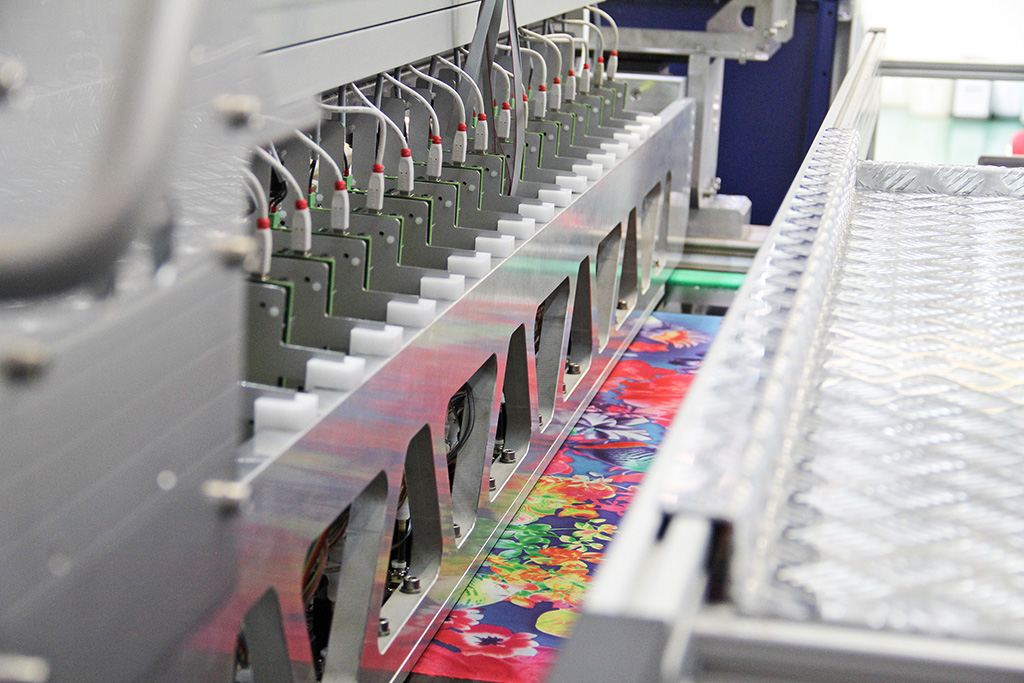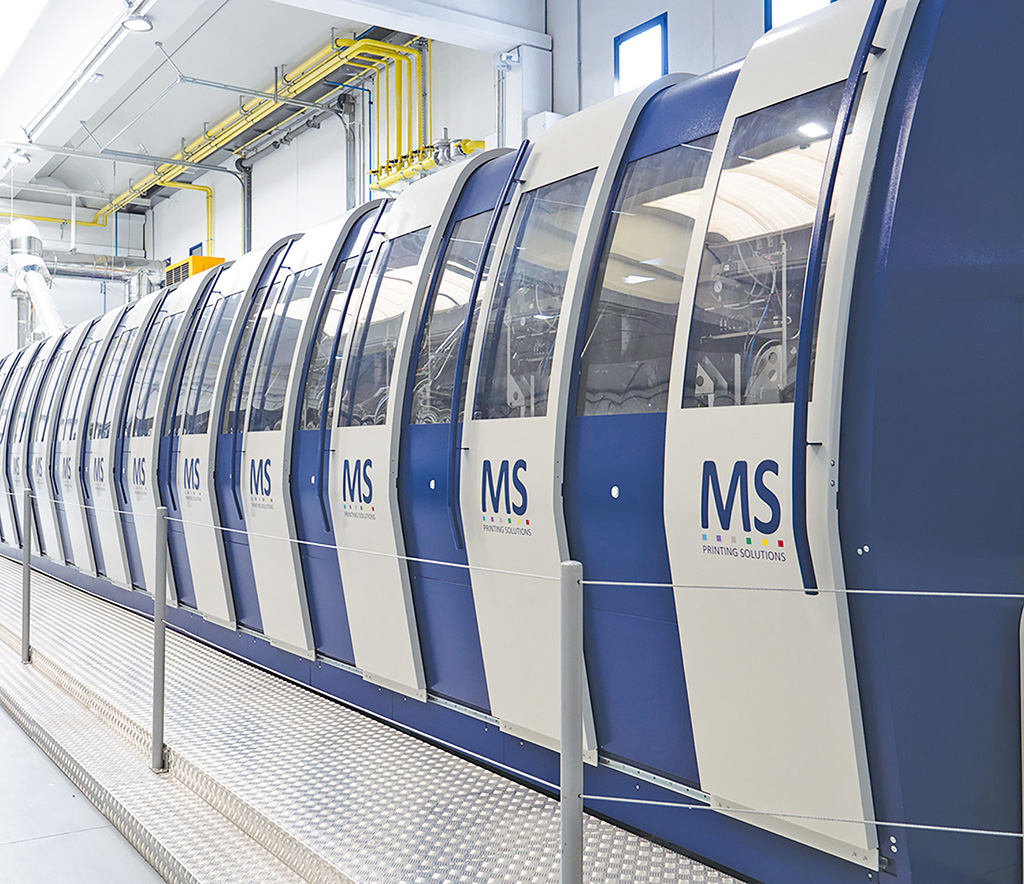Textile printing has changed drastically compared to what it was at the beginning of the century and MS Printing Solutions has been taking the lead in this changing trend

MS Printing Solutions’ (MSPS) story began in 1983 when the company was founded. It was in the late 1990s that MSPS chose to only design digital printing machines at the very beginning of the journey of the textile printing market towards the digital age, thus becoming a leader in this market. The outcome of this decision came in 2003, when the first digital printing machine was born and the journey to digitalisation began. Then, in 2011, the first LaRio Single Pass was installed, thus starting a further revolution inside the already existing digital one.
In 2019, the company flagged off the MiniLario project and it represented another step towards innovation. MiniLario has been the first scanning machine with 64 print heads, being the fastest in the world and a printing machine ahead of its time. From that moment on, digital printing has been growing more and more each year and nowadays it is the fastest growing sector in the textile market. Digital printing has many advantages if compared to the analogue one. First of all, from a sustainability point of view, it reduces the carbon footprint by around 40%, ink wastage by around 20%, energy consumption by around 30% and water consumption by around 60%.

Sustainability Counts
Today, with the energetic crisis representing a severe matter as gas and electricity prices surge, millions of people in Europe are now spending a record amount of their income on energy. Not only is this situation concerning Europe, but the whole world too. This obviously highlights the importance of savings in each sector. And, with time, new technologies will bring a radical change in manufacturing, leading to increasing digitalisation in the whole textile sector, thus causing an improvement in savings.
Secondly, digital printing is versatile, a crucial asset in a world where companies have to provide rapid order fulfilments together with a fast, agile and easy process and an efficient supply chain. Moreover, digital printing is compatible with today’s textile industry challenge, which is to carry out an innovative sustainable production chain. This can be done with integration among the production chain’s steps, with reduction of the number of processes, as for example with pigment printing which only counts two steps and also with traceability which enables companies to control their impact, thus ensuring cost-effective printing output.
Benefits of Digital Printing
Surely, digital printing has enabled customers to print faster too and to reduce the steps of the printing process. At MSPS, digital printing has continued to improve over time, with a growth in speed of around 468% in 10 years. It would take three years to print 30 km of fabric digitally in 1999 and in 2013 it took eight hours. Today, we talk about eight hours minus one. In fact, nowadays speed is not the only factor to take into consideration when thinking about digital printing. During the past few years, the sector has reached production efficiency thanks to enhanced reliability, the decrease of downtime due to machines’ breakdowns and an overall optimisation of the production chain.

The global textile printing industry is growing too with an estimated CAGR of around 12% from 2022 to 2030. In this ever-rising growth curve there are some mega trends that can easily be identified. Sustainability is one for sure and flexibility is another. Also, performance and reliability count too. In that context, the company’s digital printing machines are extremely reliable and efficient, and this translates to a cost-effective printing output, an easy replication of precise designs, and a decreased frequency in maintenance and in emergency interventions. A big trend is also to have a sustainable ROI, which takes into consideration intangible internal costs, benefits and externalities such as environmental effects which were not taken into account earlier.
Return on Investment
How does MS Printing Solutions reach a sustainable return on investment (ROI) over time? It does so by limiting unexpected breaking, reducing wastage time, increasing machine efficiency, assuring high-quality performance and boosting productivity. “At MSPS we have at heart sustainability, and we do our best to innovate, since we believe innovation to be the starting point. In order to be more and more sustainable, we put a lot of effort into research and engineering from the very beginning of the design phase, so that there is a considerable energy saving,” the management states.

“We also put a lot of effort into optimising the durability of our machines’ vital components by constantly updating and using high-quality materials, thus minimising our machines’ breakdowns and maintenance costs. The opportunity to obtain the same long-lasting printing results on different machines is also a key element when it comes to the optimisation of our clients’ processes, and for us it means being able to be versatile, which is a key trait for us. Other fundamental characteristics include being an all-round printing consultant that focuses on each phase of the process with the utmost attention,” the management adds.
This goes from assisting in the printing process traceability to granting reliability and a long lifetime for its printers. The company has a highly diversified portfolio which boasts nine paper printers, six textile printers, six dryers and five steamers – each one with its own feature. “Moreover, our research and development team constantly works on our portfolio to reach the maximum level of efficiency, aiming for a well-balanced compromise with productivity and reduction of the time to market,” the management points out. Altogether, digital printing easily appears like the right solution for the future. Not only in terms of costs and reliability, but also to provide a future to the next generation.